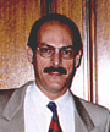|
|
 
|
|
Author
|
Topic: Push Pull tracks.
|
Stephen Furley
Film God

Posts: 3059
From: Coulsdon, Croydon, England
Registered: May 2002
|
 posted 07-22-2002 10:13 AM
posted 07-22-2002 10:13 AM




This doesn't really seem to fit into any of the forums; Brad, if you are reading this, have you considered a new forum devoted to historical processes, film preservation, etc.Back to the main subject, I understand what push pull tracks in their various forms are, and how they are reproduced, but I an not clear as to why the are capable of giving improved sound quality. Can someone give me an explanation please? How widely used were these tracks for original recording, at their peak? How widely used were push pull release prints, and between what dates were they used? I know that they weren't common, but did they ever get beyond the experimental stage? How much better could they be than a simple, single-ended track? Thank you for any replies.
| IP: Logged
|
|
|
|
|
|
John Pytlak
Film God

Posts: 9987
From: Rochester, NY 14650-1922
Registered: Jan 2000
|
 posted 07-22-2002 11:08 AM
posted 07-22-2002 11:08 AM





http://www.chace.com/chcr0699.htm "Push-pull derives its name from the in-phase/out-of-phase relationship of the two halves of the optical soundtrack. In simplest terms, the same mono sound is recorded on a split (stereo) optical soundtrack. If the tracks are mixed together equally ("summed" in engineering lingo) the in-phase/out-of-phase signal cancels. And this is how conventional sound readers play the tracks today - muffled, distorted, almost in-audible. However, on push-pull readers, the push-pull electronics combine the two signals correctly, which yields a low distortion, high fidelity playback. Push-pull, in both variable density and variable area formats, was widely used until the early 1950's to record film scores because of its high quality sound." ------------------
John P. Pytlak, Senior Technical Specialist
Worldwide Technical Services, Entertainment Imaging
Research Labs, Building 69, Room 7525A
Rochester, New York, 14650-1922 USA
Tel: +1 585 477 5325 Cell: +1 585 781 4036 Fax: +1 585 722 7243
e-mail: john.pytlak@kodak.com
Web site: http://www.kodak.com/go/motion
| IP: Logged
|
|
Leo Enticknap
Film God

Posts: 7474
From: Loma Linda, CA
Registered: Jul 2000
|
 posted 07-23-2002 04:05 PM
posted 07-23-2002 04:05 PM





quote:
Brad, if you are reading this, have you considered a new forum devoted to historical processes, film preservation, etc.
At least one exists, in the form of a listserv operated by the Association of Moving Image Archivists (AMIA). You don't have to be an AMIA member to join the listserv; details of how to subscribe can be found at www.amianet.org and click on listserv. The UK Film Archive Forum also operates a similar e-mail based discussion list but membership is restricted to staff of member institutions.
| IP: Logged
|
|
|
|
All times are Central (GMT -6:00)
|
|
Powered by Infopop Corporation
UBB.classicTM
6.3.1.2
The Film-Tech Forums are designed for various members related to the cinema industry to express their opinions, viewpoints and testimonials on various products, services and events based upon speculation, personal knowledge and factual information through use, therefore all views represented here allow no liability upon the publishers of this web site and the owners of said views assume no liability for any ill will resulting from these postings. The posts made here are for educational as well as entertainment purposes and as such anyone viewing this portion of the website must accept these views as statements of the author of that opinion
and agrees to release the authors from any and all liability.
|

 Home
Home
 Products
Products
 Store
Store
 Forum
Forum
 Warehouse
Warehouse
 Contact Us
Contact Us




 Printer-friendly view of this topic
Printer-friendly view of this topic













